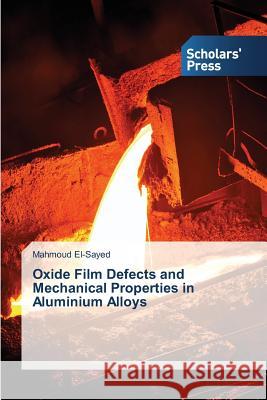Oxide Film Defects and Mechanical Properties in Aluminium Alloys » książka
Oxide Film Defects and Mechanical Properties in Aluminium Alloys
ISBN-13: 9783639711196 / Angielski / Miękka / 2014 / 332 str.
Double oxide films are significant defects in aluminium castings which were reported to have a detrimental effect on the reliability of the castings. This book reported the results of a research which was aimed at studying the behaviour of these defects in the liquid metal once they have formed. The results suggested that both oxygen and nitrogen inside the bifilm would be consumed by reaction with the surrounding melt, and that hydrogen might be diffused into the defect. The time required for the consumption of the atmosphere inside a defect entrained in pure Al, Al-7Si-0.3Mg and Al-5Mg alloy melt, was determined to be 9, 25 and 6 minutes respectively. In addition, the results suggested the occurrence of two competing mechanisms during holding of the castings in the liquid state before solidification. The consumption of air inside the defects due to reaction with the surrounding molten metal may lead to improvements in mechanical properties, but this may be accompanied by hydrogen passing into the defects, which has a deleterious effect on properties. This research could lead to the development of new techniques by which these defects might be deactivated in aluminium castings.
Double oxide films are significant defects in aluminium castings which were reported to have a detrimental effect on the reliability of the castings. This book reported the results of a research which was aimed at studying the behaviour of these defects in the liquid metal once they have formed. The results suggested that both oxygen and nitrogen inside the bifilm would be consumed by reaction with the surrounding melt, and that hydrogen might be diffused into the defect. The time required for the consumption of the atmosphere inside a defect entrained in pure Al, Al-7Si-0.3Mg and Al-5Mg alloy melt, was determined to be 9, 25 and 6 minutes respectively. In addition, the results suggested the occurrence of two competing mechanisms during holding of the castings in the liquid state before solidification. The consumption of air inside the defects due to reaction with the surrounding molten metal may lead to improvements in mechanical properties, but this may be accompanied by hydrogen passing into the defects, which has a deleterious effect on properties. This research could lead to the development of new techniques by which these defects might be deactivated in aluminium castings.











